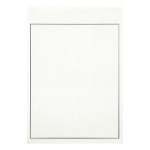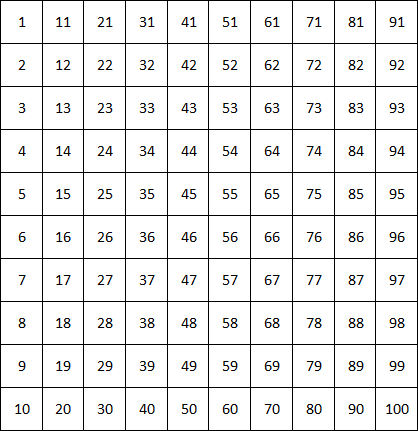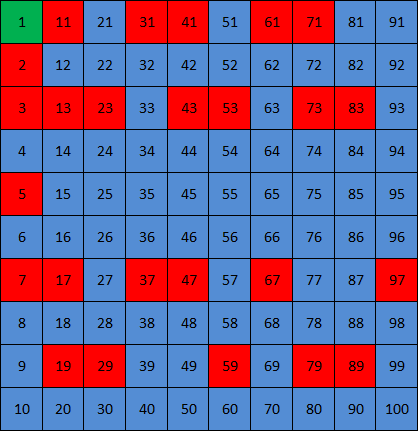- < Experiment 9
-
Experiment 10 v4
- Experiment 11 >
Mapping out prime numbers

Can you find any patterns in the prime numbers between 1 and 100?
Purpose
This experiment gives children an opportunity to appreciate what prime numbers are, find patterns or clues on how to find prime numbers within a range of numbers and determine how many and what prime numbers are found from 1 to 100.
The child will learn how a grid can be used to show the relationship between numbers.
You need to know
- that a whole number greater than 1 that is only divisible by 1 and itself is called a prime number
- that a whole number greater than 1 that is not a prime number is called a composite number
- how to use your multiplication tables to determine composite numbers
- how to multiply one- and two-digit numbers
You will need





Steps
-
Using your pencil and ruler, create a table of numbers from 1 to 100 as shown below:

- Using your green coloured pencil, colour the box containing the number 1.
- Using your blue coloured pencil, colour all boxes containing composite numbers (multiples of another number higher than 1).
-
Using your red coloured pencil, colour all boxes containing prime numbers (all those that are left).
Hint
Start by colouring all multiples of 2, then all multiples of 3, and so on.
Questions
- What is the smallest prime number in the table?
- Which is the smallest composite number?
- Which is the largest prime number?
- Which is the largest composite number?
- How many prime numbers are there between 1 and 100?
- How many composite numbers are there between 1 and 100?
- Is 1 a prime number of a composite number?
- What patterns did you find that helped you to colour in composite numbers easily?
- Group the boxes into two, group A (1-50) and group B (51-100), and draw a line in between them. Count the prime numbers found in each group and write at the top of each group. What trend can you observe within these two groups?
Expected answers
-
The completed table should look like this:

2 is the smallest prime number.
-
4 is the smallest composite number.
-
97 is the largest prime number between 1 and 100.
-
100 is the largest composite number between 1 and 100.
-
There are 25 prime numbers between 1 and 100.
-
There are 74 composite numbers between 1 and 100.
-
Neither, it's a special number. (Some mathematicians in the past consider 1 a prime, but most modern mathematicians agree that it's neither prime nor composite. You may research for the reasons behind, but that might be too advanced for KS2.)
-
Answers may include:
All even numbers except 2 may be regarded as composites right away.
Numbers ending with 5 and 0 except 5 may be regarded as composites right away.
(Answers may differ here, but what's important is that the pupil could defend it with a justifiable reason. Further discussion or testing of the child's ideas is highly recommended.)
-
There are five more prime numbers in group A than in group B. The trend is that large numbers are more likely composite than prime.
Explore further (optional)
Expand the table to include numbers from 101 to 1000.
Tips for further exploration
This is simply a case of doing more of the same.
The larger table could be drawn as a 32 x 32 grid with some blank squares (32 is smallest whole number greater than the square root of 1000).
The child only needs to consider multiples of prime numbers up to 31. This will cover everything.



